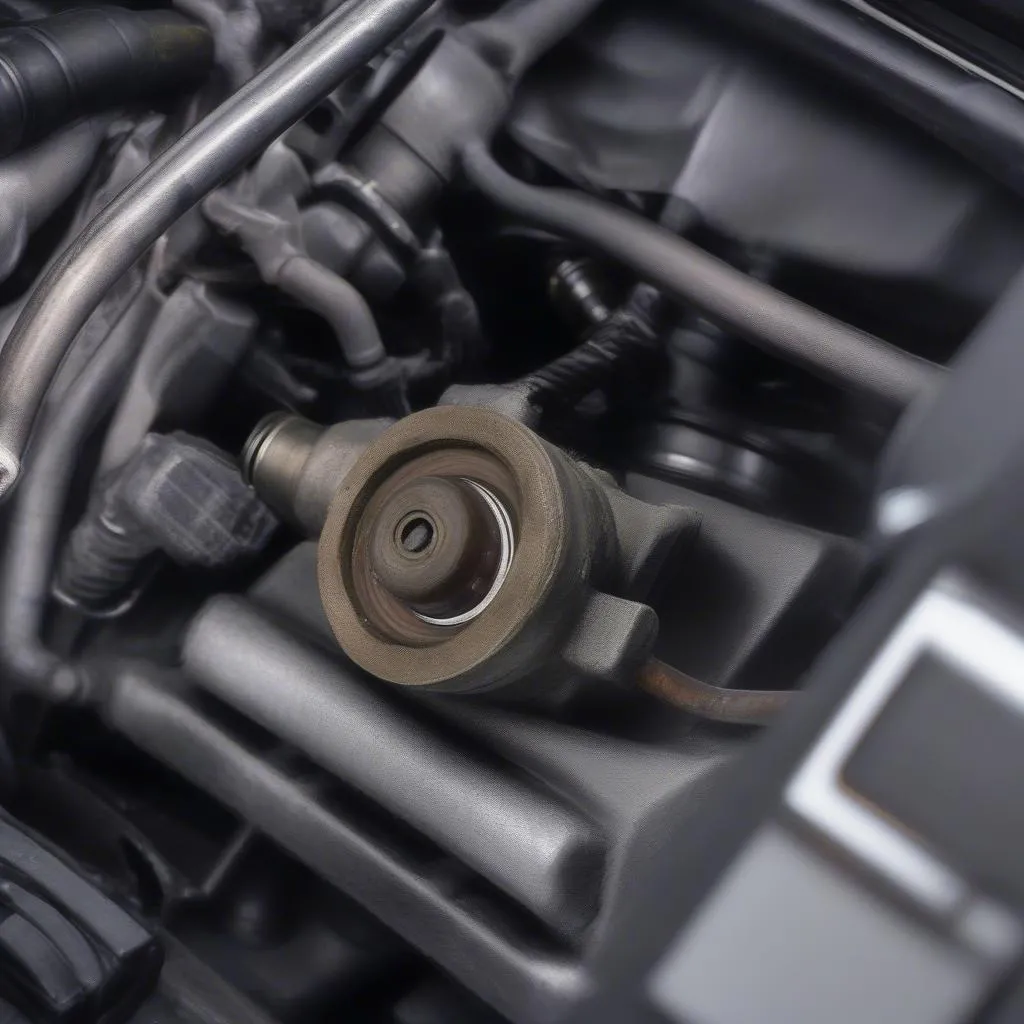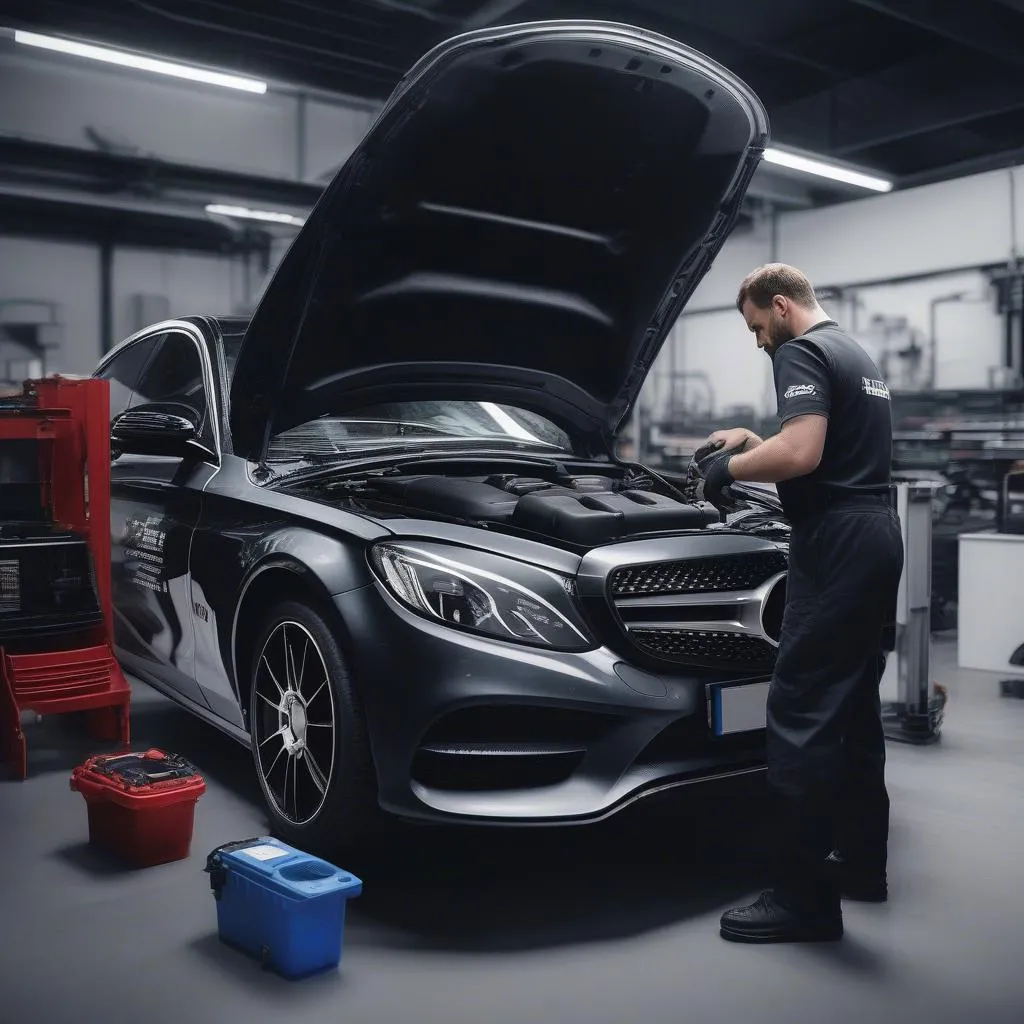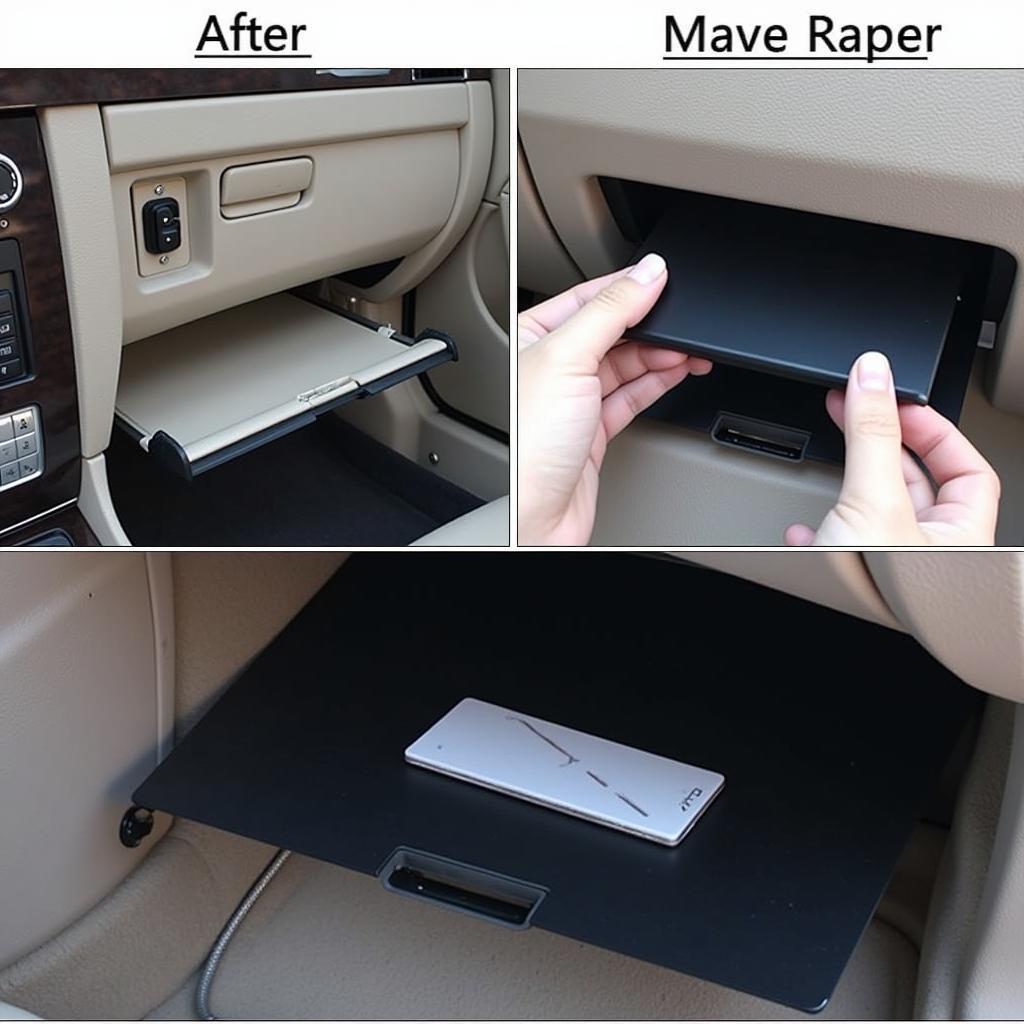Experiencing issues with your 2012 Mercedes C250 and seeing the dreaded P0340 code? Don’t panic. This article explains everything you need to know about the P0340 code, common causes, and potential costs to fix it.
Understanding the P0340 Code
In simple terms, the P0340 code signifies a problem with your car’s camshaft position sensor “A” circuit, which is usually located on the bank of the engine with cylinder #1. This sensor is critical as it tells your car’s computer the position of the camshaft, allowing for optimal fuel injection and ignition timing.
Recognizing the Symptoms
A faulty camshaft position sensor can manifest in several ways. While a check engine light is common, you might also notice:
- Difficulty starting the engine: The car might crank but struggle to start, especially when the engine is cold.
- Rough idling and engine performance: The engine might vibrate excessively, lack power, or hesitate during acceleration.
- Reduced fuel economy: A malfunctioning sensor can disrupt the fuel-air mixture, leading to decreased mileage.
What You’ll Need to Fix It
Depending on your comfort level with car repair, you might tackle the issue yourself or seek professional help. To diagnose and potentially fix the P0340 code, you might need:
- An OBD-II scanner: To read and interpret the error codes stored in your car’s computer.
- Basic hand tools: Such as sockets, wrenches, and screwdrivers for removing and replacing parts.
- Digital multimeter: For testing the electrical continuity of the camshaft position sensor and its wiring.
- New camshaft position sensor: If the old sensor is confirmed to be faulty.
- Repair manual: To guide you through the specific steps for your car model.
Troubleshooting the P0340 Code
Here’s a general guide on how to approach the P0340 code. Remember, always consult your car’s repair manual for precise instructions related to your model.
- Read the code: Connect your OBD-II scanner and verify that the P0340 code is present.
- Inspect the wiring and connector: Look for any signs of damage, corrosion, or loose connections to the camshaft position sensor. Repair or replace any faulty wiring.
- Test the sensor: Use a digital multimeter to check the sensor’s resistance and voltage output against the manufacturer’s specifications.
- Replace the sensor: If the sensor is faulty, install a new one according to your car’s repair manual.
- Clear the code: Once repairs are done, use the OBD-II scanner to clear the error code and ensure the engine light turns off.
 Camshaft sensor location on Mercedes engine
Camshaft sensor location on Mercedes engine
Cost to Fix
The cost to fix a P0340 code on a 2012 Mercedes C250 can vary greatly depending on whether you DIY or go to a mechanic.
- DIY: If you choose the DIY route, you’ll only need to pay for the parts. A new camshaft position sensor typically costs between $50 to $150, depending on the brand and where you purchase it.
- Mechanic: Taking your car to a mechanic will significantly increase the cost due to labor charges. Expect to pay anywhere from $200 to $500 or more in total.
 Mechanic inspecting engine
Mechanic inspecting engine
FAQs
Q: Can I still drive my car with a P0340 code?
While you might be able to drive for a short distance, it’s highly discouraged. Driving with a faulty camshaft position sensor can lead to further engine damage and potentially leave you stranded.
Q: Are there any preventative measures for the P0340 code?
Regular engine maintenance, including oil changes and inspections, can help prevent many sensor-related issues.
Q: Can I use an OBD-II scanner to diagnose other car problems?
Yes, these scanners can read various engine-related codes, helping you pinpoint issues with your vehicle. Consider products like those from CARDIAGTECH for comprehensive diagnostics.
Conclusion
Addressing the P0340 code promptly is crucial for the health and longevity of your 2012 Mercedes C250. By understanding the potential causes and repair options, you can make informed decisions and get back on the road with confidence.

